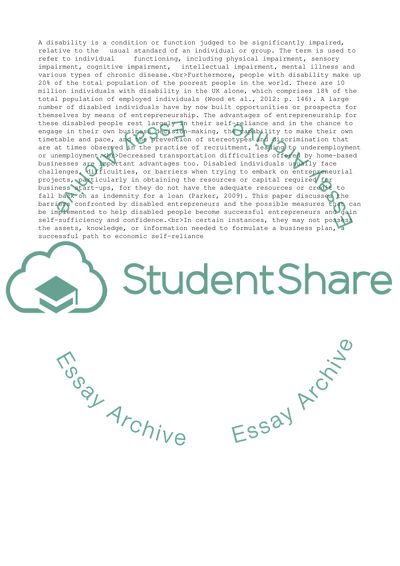Cite this document
(“Disabled Entrepreneurs Literature review Example | Topics and Well Written Essays - 3000 words”, n.d.)
Disabled Entrepreneurs Literature review Example | Topics and Well Written Essays - 3000 words. Retrieved from https://studentshare.org/business/1643556-disabled-entrepreneurs
Disabled Entrepreneurs Literature review Example | Topics and Well Written Essays - 3000 words. Retrieved from https://studentshare.org/business/1643556-disabled-entrepreneurs
(Disabled Entrepreneurs Literature Review Example | Topics and Well Written Essays - 3000 Words)
Disabled Entrepreneurs Literature Review Example | Topics and Well Written Essays - 3000 Words. https://studentshare.org/business/1643556-disabled-entrepreneurs.
Disabled Entrepreneurs Literature Review Example | Topics and Well Written Essays - 3000 Words. https://studentshare.org/business/1643556-disabled-entrepreneurs.
“Disabled Entrepreneurs Literature Review Example | Topics and Well Written Essays - 3000 Words”, n.d. https://studentshare.org/business/1643556-disabled-entrepreneurs.


